Veblen good
description: Luxury good for which the demand increases as the price increases
16 results
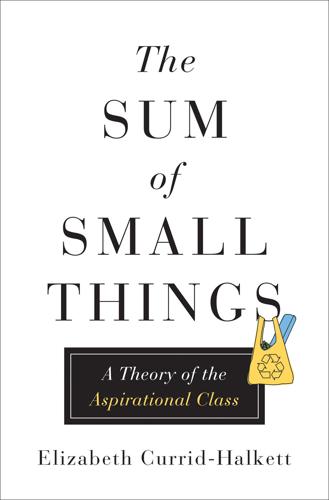
The Sum of Small Things: A Theory of the Aspirational Class
by
Elizabeth Currid-Halkett
Published 14 May 2017
These types of investments offer meaningfully different outcomes for those able to spend compared to everyone else. CONSPICUOUS CONSUMPTION AND “VEBLEN GOODS” The late Princeton economist Harvey Leibenstein coined the term “Veblen goods” or “Veblen effects” to describe the goods that are used for conspicuous consumption. Examining consumption patterns by income also shows differences across society in how we conspicuously consume those classic Veblen goods. Let’s look at the first emerging trend I mentioned at the beginning of this chapter: The rich are spending less on goods that demonstrate wealth.
…
As the economist Robert Frank observes, with the outcry over inequality in full swing, public hedonism and overt luxury spending have become flashpoints in the debate (which is not to say they aren’t spending money), and thus those in top income groups find new channels for their money that are known only to those in their circles (whether it’s a live-in housekeeper or, for the very rich, NetJets to Art Basel Miami).26 Conversely, the middle class, those in the 40th to 60th percentile income bracket making on average $47,000 a year, are returning to their pre-Recession conspicuous consumption behavior while reducing their spending on inconspicuous consumption in the post-Recession period. Historically, they have always spent significantly more on conspicuous expenditures than inconspicuous consumption, and at the height of the financial crisis barely reduced their spending on clothes, watches, cars, and other Veblen goods (see fig. 3.1). In fact, in absolute dollars, only the top three income brackets are spending more today on inconspicuous consumption than they did in 1996—the middle class and lower income groups are spending less during the same time period. Overall, the upper income brackets are spending 5–10% more on these goods than they did in 1996.
…
Gender and Society 22(4): 524–526. doi:10.1177/0891243208315383. Currid, E. (2006). New York as a global creative hub: A competitive analysis of four theories on world cities. Economic Development Quarterly 20(4): 330–350. doi:10.1177/0891242406292708. Currid-Halkett, E., Lee, H., & Painter, G. (2016). Veblen goods and metropolitan distinction: An economic geography of conspicuous consumption. Working paper, University of Southern California. Dale, S., Krueger, A. B., & National Bureau of Economic Research. (2011). Estimating the return to college selectivity over the career using administrative earnings data.
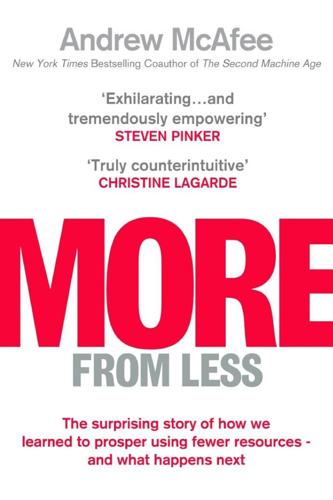
More From Less: The Surprising Story of How We Learned to Prosper Using Fewer Resources – and What Happens Next
by
Andrew McAfee
Published 30 Sep 2019
With most products, demand goes down when prices go up, all other things being equal. But with “Veblen goods,” something very different happens: higher prices cause demand to go up. Such products are named for Thorstein Veblen, the American economist and sociologist who coined the phrase conspicuous consumption. Veblen goods such as luxury cars, designer clothes, and fine art are valued in large part because they’re expensive. They signal the affluence and high status of their owners. Some animal products are Veblen goods, which is bad news for the animals. As we saw in chapter 3, sea otters became so scarce in the late nineteenth century that prices for their pelts rose tenfold.
…
As we saw in chapter 3, sea otters became so scarce in the late nineteenth century that prices for their pelts rose tenfold. But this didn’t cause a search for replacements because people didn’t want a replacement; they wanted the otter pelt more than ever. The inverted economics of Veblen goods would probably have doomed the species if not for the international moratorium on sea otter hunting signed in 1911. Bison faced the same problem as their numbers cratered. In the 1890s buffalo heads sold for as much as $1,500, which is equivalent to more than $40,000 today. I’m confident that some time around the turn of the twentieth century some knave would have sold to some fool the right to kill the last few North American bison on Earth for a huge sum of money, had that been allowed.
…
Seebohm, 24 Royal Crown Cola, 101 Russia, 185 Safe Drinking Water Act (1974), 66 Salemi, Jason, 216 Salesforce, 256–57 Samasource, 255–56 sanitation, 22–23, 194 Saudi Arabia, 104 Save the Elephants, 154 Schmidt, Christian, 148 Schnakenberg, Keith, 175 Schumpeter, Joseph, 122 Scientific American, 59–60 Scotland, 38 Scramble for Africa, 39 sea otters, 43, 96, 152 Second Enlightenment, 123, 141, 238–39, 265 Second Machine Age, 112–13, 114–15, 122–23, 141, 162, 168, 177, 200, 206, 213, 231 Second Machine Age, The (Brynjolfsson), 112 self-employment, 138–39 self-healing cities, 21–23 self-interest, 127 Sen, Amartya, 68–69, 94 service industry, 88, 200–201 Shapiro, David, 190 Shell Oil, 103, 104–05 Shellenberger, Michael, 251 Sherman, Brad, 107 Sheskin, Mark, 210 Short Account of the Destruction of the Indies (las Casas), 39–40 Sidgwick, Henry, 142n silver, 120 Simon, Julian, 69–70, 71–72, 75, 151, 179, 244–45 Singapore, 148 Singh, Manmohan, 171–72 Skeptical Environmentalist (Lomborg), 179, 181 slash-and-burn agriculture, 148 slavery, 35, 36, 37–38, 181 Sloman, Steven, 226 smartphones, 102, 111, 113, 168–69, 205, 235, 236 Smil, Vaclav, 31, 101 Smith, Adam, 125–39, 128–29 Smith, Noah, 191 smog, 42, 55, 186 Snow, John, 22–23 social capital, 212–13, 216–17, 228–29, 247, 254, 255, 270 social democracy, 133–34 social development, 24–25, 26 social development index, 60n social safety nets, 131–32 socialism, 132–38, 192 sodium nitrate, 17 solar power, 111, 240, 250, 269 Song, Jian, 93 Sørlle, Petter, 47 Soros, George, 132 South Korea, 117–18, 174 Soviet Union, 133, 163–64, 170–71 “Spaceship Earth”, 64–65 Staggers Act (1980), 109 Starmans, Christina, 210 steam engine, 16, 17, 27, 30, 36, 44, 48–49, 205, 206, 237 steamships, 17–18, 26 steel, 80 Steller, Georg Wilhelm, 273 Steller’s sea cow, 273 Stenner, Karen, 217 Sterba, Jim, 43–44 Stigler, George, 126 Strangers in Their Own Land (Hochschild), 221 Suicide (Durkheim), 215–16, 219 sulfur dioxide, 54–55, 95, 186, 249 Sullivan, Andrew, 219 Summers, Larry, 254 sustainability, 64 taxation, 5, 130, 250 tech progress, 2–3, 4, 36, 67, 99–123, 113, 141, 151, 158–59, 167–68, 169–70 defining of, 114–15 Tesla, Nikola, 27 Texas, Hill Country of, 29, 205 Thatcher, Margaret, 132, 138 Theory of Moral Sentiments (Smith), 129 Thomas, Chris, 182–83 3-D printing, 239 tin, 72 tin cans, 101 Tocqueville, Alexis de, 89–90, 212–13 Toxic Substances Control Act (1976), 66 tragedy of the commons, 183 transportation, 241–42 Trump, Donald, 158, 201 trust, 212, 213, 217 Truth About Soviet Whaling, The (Berzin), 164 Ulam, Stanislaw, 19n Ultimate Resource, The (Simon), 69, 179 unfairness, 210, 220–24 Union Oil, 54 United Airlines, 257 United Kingdom, 76, 85 United Nations, 40, 58, 199 United States, 117–18 agriculture in, 81–82, 100 coal consumption in, 102–03 cropland acreage in, 201–02 dematerialization in, 76–85 industrial production in, 88–89 mortality rates in, 213–14 slavery in, 37–38 suicide rate in, 214–16 water pollution in, 189–90 urbanization, 91–92, 199–200 Utopia or Oblivion (Fuller), 70 vaccination, 227 Van Reenen, John, 203, 204, 207 Varian, Hal, 236 Veblen goods, 152–53 Veblen, Thorstein, 152 Venezuela, 118, 134–38, 172 voluntary exchange, 117 wages, 20–21 Waggoner, Paul, 76 Wagner, Stephan, 148 Wald, George, 61 water, drinking, 194 water pollution, 189–90 Watt, James, 15–16, 20, 121, 206, 237 Watt, Kenneth, 58 Wealth of Nations (Smith), 127, 131 Weeks-McLean Law Act (1913), 96 Welzel, Christian, 176, 177 Wernick, Iddo, 76 whales, 44, 46–47, 163–65 wheat, 31–32 Wheelwright, William, 17–18 Whole Earth Catalog, 68 Why Nations Fail (Acemoglu and Robinson), 159 Wilson, James, 19n wind power, 111, 240, 250 Winship, Scott, 215 Wolff, Edward, 206 Woodbury, N.J., 65 wooly mammoth, 180 World Bank, 118, 168, 169, 192 World Values Survey, 176 Yao Ming, 154, 161 Yellowstone National Park, 46, 153 YouTube, 236 Zoorob, Michael, 216 First published in the United States by Scribner, an imprint of Simon & Schuster, Inc., 2019 First published in Great Britain by Simon & Schuster UK, Ltd, 2019 A CBS COMPANY Copyright © 2019 by Andrew McAfee The right of Andrew McAfee to be identified as the author of this work has been asserted in accordance with the Copyright, Designs and Patents Act, 1988.
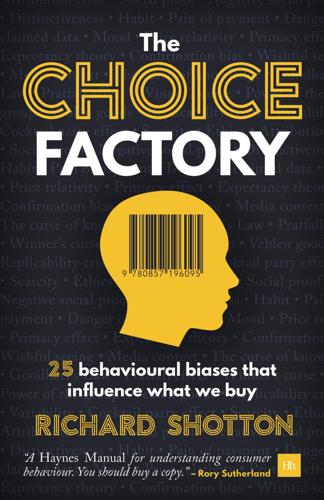
The Choice Factory: 25 Behavioural Biases That Influence What We Buy
by
Richard Shotton
Published 12 Feb 2018
Contentsx Praise for The Choice Factory Preface Introduction Bias 1: The Fundamental Attribution Error Bias 2: Social Proof Bias 3: Negative Social Proof Bias 4: Distinctiveness Bias 5: Habit Bias 6: The Pain of Payment Bias 7: The Danger of Claimed Data Bias 8: Mood Bias 9: Price Relativity Bias 10: Primacy Effect Bias 11: Expectancy Theory Bias 12: Confirmation Bias Bias 13: Overconfidence Bias 14: Wishful Seeing Bias 15: Media Context Bias 16: The Curse of Knowledge Bias 17: Goodhart’s Law Bias 18: The Pratfall Effect Bias 19: Winner’s Curse Bias 20: The Power of the Group Bias 21: Veblen Goods Bias 22: The Replicability Crisis Bias 23: Variability Bias 24: Cocktail Party Effect Bias 25: Scarcity Ethics Conclusion References Further reading Acknowledgements Index Praise for The Choice Factory “This book is a Haynes Manual for understanding consumer behaviour.
…
Furthermore, the cinema ad outperformed the same copy by 21% to 15% on the other metric monitored, “it’s the sort of ad that sticks in your mind”. Applying these approaches won’t transform a mediocre ad into a great one but it might just give it an edge over copy bought in a more generic manner. If transformation is what you’re after then the next chapter might be of interest. It’s all about the power of price… Bias 21: Veblen Goods How a high price can boost demand As it’s a colleague’s birthday one of your team has organised a surprise: a caterpillar cake and a few glasses of bubbly. The champagne hits the spot perfectly – cold, refreshing with a subtly sweet aftertaste. You drain your glass and head to the kitchen for a little more.
…
, by Evan Davis, John Kay, and Jonathan Star [London Business School Review, Vol. 2, No. 3, pp. 1–23, 1991] Marketers Are from Mars, Consumers Are from New Jersey by Bob Hoffman [2015] Bias 16: The curse of knowledge Made to Stick: Why Some Ideas Survive and Others Die by Chip Heath and Dan Heath [2008] The Wiki Man by Rory Sutherland [2011] Bias 17: Goodhart’s law Long and Short of It: Balancing Short- and Long-Term Marketing Strategies by Les Binet and Peter Field [2012] Management in 10 Words by Terry Leahy [2012] Leading by Alex Ferguson and Michael Moritz [2015] Bias 18: The pratfall effect: Social Animal by Elliot Aronson [1972] The Wasp Factory by Iain Banks [1984] Bias 19: Winner’s curse The Winner’s Curse: Paradoxes and Anomalies of Economic Life by Richard Thaler [1991] Originals: How Non-Conformists Move the World by Adam Grant [2016] ‘Harnessing naturally occurring data to measure the response of spending to income’, by Michael Gelman, Shachar Kariv, Matthew Shapiro, Dan Silverman, Steven Tadelis [Science, Vol. 345, No. 6193, pp. 212–215, 2014] ‘The Psychology of Windfall Gains’, by Hal Arkes, Cynthia Joyner, Mark Pezzo, Jane Gradwohl Nash, Karen Siegel-Jacobs, Eric Stone Eric [Organizational Behaviour and Human Decision Processes, Vol. 59, No. 3, pp. 331–347, 1994] On the Fungibility of Spending and Earnings – Evidence from Rural China and Tanzania by Luc Christiaensen and Lei Pan [2012] Bias 20: The power of the group ‘Humour in Television Advertising: The Effects of Repetition and Social Setting’, by Yong Zhang and George Zinkhan [Advances In Consumer Research, Vol. 18, pp. 813–818, 1991] ‘Feeling More Together: Group Attention Intensifies Emotion’, by Garriy Shteynberg, Jacob Hirsh, Evan Apfelbaum, Jeff Larsen, Adam Galinsky, and Neal Roese [Emotion, Vol. 14, No. 6, pp. 1102–1114, 2014] Bias 21: Veblen goods ‘Commercial Features of Placebo and Therapeutic Efficacy’, by Rebecca Waber, Baba Shiv, Ziv Carmon; Dan Ariely [Journal of the American Medical Association, Vol. 299, No.9, pp. 1016–1017, 2008] Bias 22: The replicability crisis ‘Why Susie Sells Seashells by the Seashore: Implicit Egotism and Major Life Decisions’, by Brett Pelham, Matthew Mirenberg, and John Jones [Journal of Personality and Social Psychology, Vol. 82, No. 4, pp. 469–487, 2002] ‘Rich the banker?
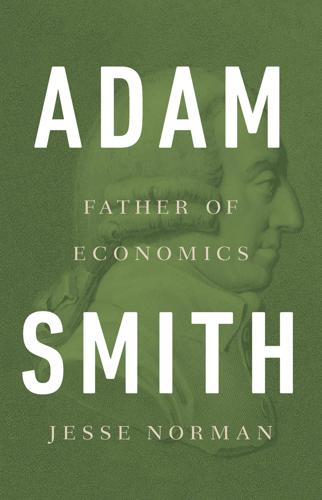
Adam Smith: Father of Economics
by
Jesse Norman
Published 30 Jun 2018
In identifying the man who misses what matters in life by questing after ‘trinkets of frivolous utility’, Smith shows his awareness that markets can be driven by human passions as well as by human calculation. Today we might describe some such items as ‘Veblen goods’. Named after the great Norwegian-American economist Thorstein Veblen, Veblen goods are those of ‘conspicuous consumption’, for which demand does not lessen when the price rises, as the standard theory would predict. Instead, demand for the good increases, as consumers see the price rise as a signal of relative scarcity or status, making the good still more desirable.
…
The result is that, notwithstanding a handful of mavericks, few wish to be seen as unusual or apart from the others. The behaviour of these markets is often dominated by ‘momentum’ investors, who trade based not on any estimate of fundamental or intrinsic value, but on the rate of rise or fall in the asset’s price. As with Veblen goods, high share prices come to be seen as a mark of underlying value, and rapid or extended price rises as signals of lack of supply, stimulating demand and causing investors to crowd in. Conversely, price falls are read as signals of over-supply, causing investors to sell heavily in turn. But these rises and falls can also occur in apparently autonomous ways, as investors simply cue their behaviour off each other, rather than for any more fundamental reasons.
…
I am very grateful to Tim Besley for this point; see especially his ‘The New Political Economy’, Economic Journal, 117.524, 2007. See also Roman Frydman and Michael D. Goldberg, Imperfect Knowledge Economics, Princeton University Press 2007 Wisdom of crowds: cf. James Surowiecki, The Wisdom of Crowds, Doubleday Books 2004 Veblen goods: see Thorstein Veblen, The Theory of the Leisure Class: An Economic Study in the Evolution of Institutions, Macmillan 1899. In his essay on the imitative arts (in EPS) Smith memorably analyses the phenomenon of topiary in Veblenian terms: ‘It was some years ago the fashion to ornament a garden with yew and holly trees, clipped into the artificial shapes of pyramids, and columns, and vases, and obelisks.

The Gated City (Kindle Single)
by
Ryan Avent
Published 30 Aug 2011
Today, the condition of being around a lot of other people adds to metropolitan expense via congestion, and the cost of competition for scarce public and private resources (the parks are crowded, and the best shows sell out quickly). What could possibly make city life worth the expense? Maybe it’s all for show. It could be that cities are what economists call Veblen goods, after economist Thorstein Veblen. A Veblen good has an unusual property -- as its price rises, demand for it also rises. Why? Because it functions as a status symbol. Wealthy Americans could choose to pay high prices for city life because city life is like a Rolex watch or a $10,000 bottle of wine: it shows that you've got money.
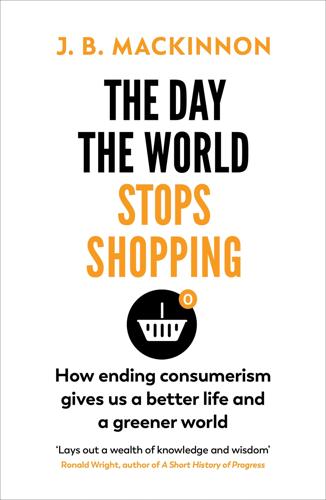
The Day the World Stops Shopping
by
J. B. MacKinnon
Published 14 May 2021
In the recent past we rarely knew exactly how friends or family, let alone total strangers, were consuming on their holidays or at restaurants; today we often do, in real time. As it happens, Veblen anticipated that this would occur. “The conspicuous consumption of goods should gradually gain in importance,” he wrote, “until it had absorbed all the available product, leaving nothing over beyond a bare livelihood.” Almost everything now is a “Veblen good.” Veblen thought a lot about why we engage in such behaviour. The cultural shorthand for his theory usually goes like this: poorer people envy richer people, and therefore strive either to become rich or to mimic the things that rich people do. What Veblen called conspicuous consumption has since been described as competitive consumption, status consumption, even invidious consumption—consumption that is likely to inspire resentment, envy or indignation in others.
…
A series of heat waves helped, as did the fact that it was an era when human progress was equated with new technologies; studies found that whenever an air conditioner appeared in a neighbourhood, protruding from a window, others soon sprouted like mushrooms. AC was being conspicuously consumed—it had become a Veblen good. By 1957, air conditioning began to be included in house prices, marking the point where it first made the shift from a gadget we shopped for to part of the background of everyday life. That same year, one of the co-founders of the Carrier Corporation, Logan Lewis, wrote a pamphlet for the company’s staff to remind them that the success of air conditioning was hard won and had never been inevitable—the technology remained all but absent from European homes.
…
See also Finland sumuyasi tokoro, 271 Sunday sabbath, 46 closing, 43–45, 49, 51–52 shopping, 44, 51 Sustainable Prosperity, 90–91 Suzman, James, 3, 278, 293 “swamp coolers,” 199 Syktyvkar, 131 system dynamics approach, 82 Tahiti, 20 Takano, Koichiro, 271–72 “tech,” 255 technology, 34, 60, 82, 132, 144–45, 147–48, 178, 201, 207, 255, 263 consumption, reducing, 291–92 digital technology, 251, 254 green technology, 8–9, 67, 70, 75, 91 temperature “change sensation,” 200 “metabolic syndrome,” 206 “non-shivering thermogenesis,” 205 room temperature, 202–3, 205 “thermal boredom,” 207 “thermoneutral” condition, 206 Ten Books on Architecture (Vitruvius), 199 Ten Summoner’s Tales, 51 Terkel, Studs, 135, 238 Thatcher, Margaret, 82–83, 213 things, attachment to, 143–53 “think globally, act locally,” 203 “third world” feeling, 34 Thoreau, Henry David, 5, 9, 238, 287 three Cs, 202 “time famine,” 48 “time vampire,” 256 TINA, 83 toki, 263, 268, 272 tokikala, 263 Tokyo, 72, 170, 176, 181, 214, 251–52, 259–61, 265–66, 268–70, 272 Tom Tailor, 157 Tomlinson, Ray, 179 Top Runner, 213–15 Toraya, 170–73, 177 Toronto, Canada, 59, 81, 126 transformation, not-shopping digital sphere, consumerism in, 249–58 happiness, redefining, 237–48 “just enough,” state of, 275–84 nonhuman species, protecting, 223–35 population, decline of, 259–73 Trends Research Institute, 240 Trentmann, Frank, 50, 158, 175, 211 Tsumkwe, 2, 5, 280 Tuckerman & Co., 161–62, 288–89 tuna, 234 Turner, James, 114–15 TV characters, depiction of, 102 underconsuming, 36, 281 Unfulfillment Center, 164 United Kingdom, 6, 202 United Nations, 6, 34 United States, 10, 21, 25, 27, 35, 52, 61, 70–71, 85–86, 91, 102–3, 105, 108, 134, 167, 175, 182, 211, 215, 227, 233–34, 287 and air conditioning, 199 cotton, production of, 26, 161 garbage, output of, 7 happiness, generating, 39 household spending, 13, 20 living, cost of, 36 Sabbatarian nation, 44 shoppers, spending of, 7 shopping addict, stereotype of, 7 Universal Declaration of Human Rights, 187 Urban-Brookings Tax Policy Center, 213 US Bureau of Labor Statistics, 162, 293 utility companies, 201 U-turners, 264 “valorization of busyness,” 53 Van Eeghen, 177 vanlife, 23 Varro, Laszlo, 63–64, 66 “Veblen good,” 100, 201 Veblen, Thorstein, 99–102, 104, 201, 212 Venice, Italy, 178 Victor, Peter, 81–83, 87–91, 105, 267 Vietnam War, 22 ville lumière, 77 “virtuous cycle,” 243 “visibly consumed,” 100 Vitruvius, Marcus, 199 Volcker, Paul, 180 voluntary simplicity, 237–41, 244, 267 Von Hippel, Eric, 179 wabi-sabi, 151–53, 267 wagashi, 171, 173, 182 Walker, Adam, 166 WALL-E (film), 153 Walmart, 135, 161, 163–64 Wang, Momo, 250 Ware, Caroline, 36 Warren, Earl, 49 Washington Redskins, 129 wealth distribution of, 81, 84, 91, 279 “health to wealth,” 233 markers of, 103 material wealth, 243, 282–82 overall wealth, 20, 90 redistribution of, 91, 280 wealthy nations, 59, 64, 97, 262 well-being, 4, 39, 63, 74, 87, 118–22, 124–28, 247, 279, 290 Western Europe, 6, 58, 63, 86, 105, 134, 167 whaling, 223–225.
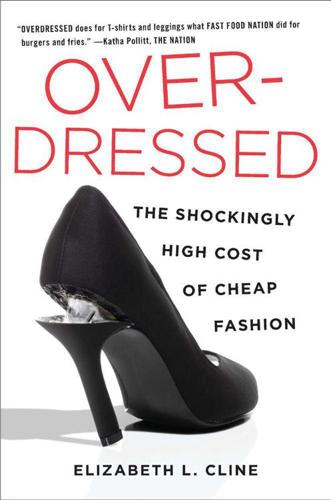
Overdressed: The Shockingly High Cost of Cheap Fashion
by
Elizabeth L. Cline
Published 13 Jun 2012
Women’s Wear Daily also reported that cheap-fashion prices are not pulling down designer price tags but driving them up: Consumers are shopping at the high-end specifically to “max out their Visas.”21 They are using clothes as a type of competitive consumption. In economics, there is a principal known as “Veblen goods.” These are the products we desire more the higher their prices go because we hope this will show other people that we have wealth and status. Clothing is very sensitive to this effect since it deals directly with personal expression and ego. We see it as an extension of ourselves, and it is the most visible way we can strut our stuff.
…
Maxx, 2, 8, 13, 30 TNS Mills, 50 Today Show, The, 19 Tommy Hilfiger, 18, 23, 24, 67, 91, 141, 146 Topshop, 100 Trans-Americas Trading Co., 129–30, 133 Trebay, Guy, 110 Triangle Shirtwaist Factory, 44, 142–43 Trovata, 109 Tucker, 114 Ullman, Myron, 95–96 Umbro, 40, 148, 181 Uniform Project, 191 unions, 38, 44, 48, 51, 140–44, 154, 155, 163 UNIQLO, 2, 33, 70 UNIS, 60 UNITE HERE, 48 Universal Studios, 40 Urban Outfitters, 13, 43, 60–61, 73, 204, 205 USA Today, 202 Usigan, Ysolt, 71 Valentino, 62, 63 Van Meter, Jonathan, 17, 19 Variety, 31 Varsity, 148 Veblen goods, 77 Versace, 6 Very Sweet Life, 187–88 Very Sweet Life, 190 VF, 181 Victoria’s Secret, 189 videos, YouTube, 12, 13–15, 122 Vietnam, 165, 180 vintage clothing, 133–34, 135, 201–2, 204 designs copied from, 112–13, 120 refashioning of, 134, 200–202, 206 Vogue, 17, 22, 30, 31, 34, 64, 65, 114, 171 Vogue.com, 113 von Furstenberg, Diane, 62, 110, 171 Wagner, Robert, 143 Wagner, Stacy, 158 Wall Street Journal, 43, 92, 93, 95 Walmart, 2, 12, 13, 15, 18, 23, 24, 26–27, 30, 31, 70, 95, 96, 100, 131, 144, 181 factories and, 144–48, 151, 159 Walton, Sam, 95 Wanamaker’s, 1 Ward, Andy, 36–38, 41, 43, 45, 52, 53, 142, 214 Warner Brothers, 148 Washington Monthly, 53, 148 Washington Post, 132, 185 well-spent.com, 60 What’s in a Dress?

How Much Is Enough?: Money and the Good Life
by
Robert Skidelsky
and
Edward Skidelsky
Published 18 Jun 2012
Snob and bandwagon goods are not of course mutually exclusive: many snob goods mutate into bandwagon goods, leading to their abandonment by true snobs. This perpetual circle is familiar from the worlds of art and fashion. Overlapping with both snob and bandwagon goods are “Veblen goods,” so called in honor of the great American theorist of conspicuous consumption, Thorstein Veblen. Veblen goods are desired insofar as they are expensive and known to be expensive; they function, in effect, as advertisements of wealth. In the still hierarchical world of business, whether one travels first, business or economy class signals one’s rank in the company.
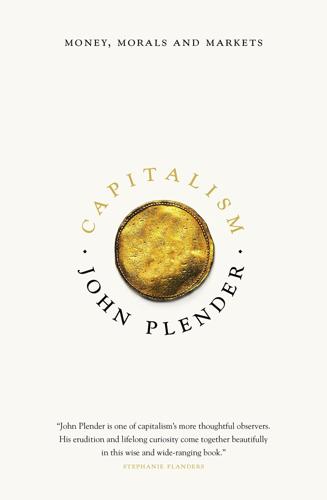
Capitalism: Money, Morals and Markets
by
John Plender
Published 27 Jul 2015
In a caustic but perceptive jibe, the Norwegian-born economist Thorstein Veblen, best known for his critique of conspicuous consumption, remarked that ‘beauty is commonly a gratification of our sense of costliness masquerading under the name of beauty’. Hence, the coinage in economics of the term ‘Veblen goods’, which refers to commodities of which people will buy more when the price goes up because this confers increased status, whereas higher prices more normally choke off demand. Or, in the language of the thought-provoking British economist Fred Hirsch, many works of art such as Old Masters are ‘positional’ goods.
…
P. 1 Times/Sotheby Art Indices 1 Timon of Athens (Shakespeare) 1 Titian 1 toads (see Madame Nui’s toad) Tocqueville, Alexis de 1 ‘too big/interconnected to fail’ syndrome 1 Toyoda, Sakichi 1 transmutation of base metal into gold 1 Trichet, Jean-Claude 1 trickledown theory 1, 2 Trollope, Anthony 1, 2, 3 tulip mania 1, 2, 3 Turner, Adair 1 two-tier capital structures 1 UBS 1 UK debt 1 entrepreneurs 1, 2 financial services 1 gold standard 1, 2 inequality 1, 2, 3 manufacturing 1, 2, 3, 4, 5 regulation 1, 2 speculation 1 taxation 1 Unto This Last (John Ruskin) 1 US 1 banks 1, 2, 3, 4, 5 Bretton Woods Conference 1 debt 1, 2, 3, 4 dependence on China 1, 2 financial services 1 gold standard 1 inequality 1, 2, 3 literature 1 manufacturing 1, 2, 3 regulation 1 robber barons 1 speculation 1, 2, 3 taxation 1, 2, 3, 4, 5 trade 1 usury laws 1, 2 Utopia (Thomas More) 1, 2 Vanderbilt, Cornelius 1 Vasari 1 Vayanos, Dimitri 1 Veblen goods 1 Venttsel, Elena 1 Vermeer, Jan 1 Vickers Commission (UK) 1 Vico, Gianbattista 1 Victoria, UK Queen 1 Vinik, Jeffrey 1 Volcker, Paul 1, 2, 3 Volcker rule 1 Voltaire 1, 2, 3, 4, 5 Wagner, Richard 1, 2, 3 Wall Street (film) 1 Wall Street Crash (see crash of 1929) war 1 Warhol, Andy 1, 2, 3, 4 Watt, James 1 Way We Live Now, The (Anthony Trollope) 1, 2 Wealth of Nations (Adam Smith) 1, 2, 3 Webb, Beatrice 1 Weber, Max 1 Wedgwood, Josiah 1 Weinstock, Arnold 1 Westinghouse, George 1 Wheatcroft, Geoffrey 1 Wheen, Francis 1 White, Harry Dexter 1 Whitney, Richard 1, 2, 3 Wilde, Oscar 1 Wilson, A.
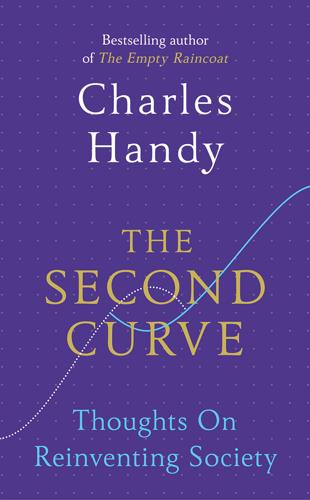
The Second Curve: Thoughts on Reinventing Society
by
Charles Handy
Published 12 Mar 2015
I am ashamed now to think that I had no idea of how I was going to earn that money or how I wanted to live, other than driving around in an absurd car, but I was no different from some of the young people I come across today – money as the presumed answer to life. The trouble is that money remains the one thing of which, it seems, you can never have enough, as the escalating (and surely unnecessary) rewards of senior executives seem to prove. Even when you have met all your needs and wants there are always the Veblen goods, so called after Thorstein Veblen’s theory of comparative goods, those aspects of conspicuous expenditure that are effectively rationed, like the membership of elite clubs, the ownership of property in an exclusive zone, or being in the top ten of some league table of corporate pay. Money is also, for some, a scorecard, unrelated to anything it can buy except a place on the Forbes List of billionaires.
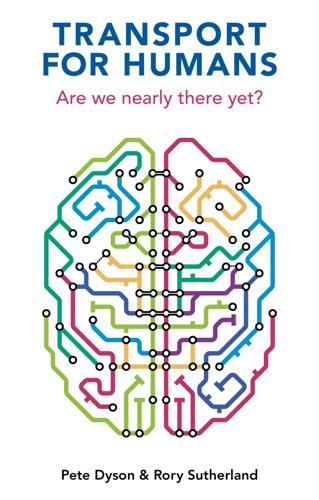
Transport for Humans: Are We Nearly There Yet?
by
Pete Dyson
and
Rory Sutherland
Published 15 Jan 2021
This idea can be expanded to behaviour: think of things that we don’t need to do – things that, in a narrow rational framework, aren’t the most efficient actions to take – but that reveal something about our character to others. The more public the behaviour, the more powerful the signal.18 Trains and planes enable costly signalling by selling premium tickets – these are Veblen goods. Now we can entertain the idea that public transport can be comfortable and indulgent: bigger seats and tables show social status during and after the journey (a fact enhanced by social media). A cunning innervation is already in place to harness signalling as a way to increase the status of the electric car as a signal that the driver cares for the environment.
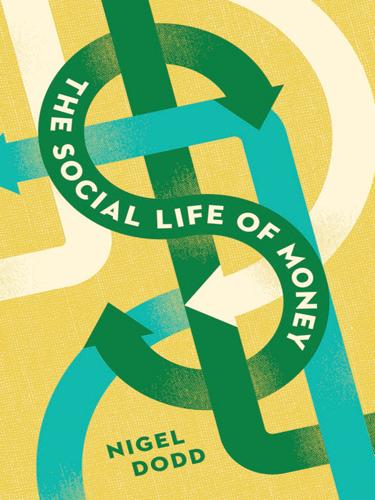
The Social Life of Money
by
Nigel Dodd
Published 14 May 2014
I am not giving general introductions to these figures but focusing specifically on what they had to say about (and how they used) notions of waste and general economy, and more narrowly, what they said about the nature of money in relation to these notions. By addressing money from the perspective of waste, I am inverting its more customary textbook treatment as a function of utility. This is a familiar theme in the study of consumption: luxury objects express the capacity of their owners to waste what they have, and the “Veblen good” is more coveted the higher its price goes. As Veblen describes it in The Theory of the Leisure Class (1899), the capacity to indulge in wasteful expenditure—and to make others use up their productive time catering to one’s luxurious tastes—is a key marker of distinction (Veblen 2009). Waste is a cultural symbol, in Veblen’s theory; indeed, one might refer to wasteful rather than conspicuous consumption (Varul 2006: 104–105).
…
See also conceptual utopia; realistic utopia; technical utopia; techno-utopia valorization, 73, 231n25, 242 valuation, 28–29, 40, 160, 215, 272, 295, 305, 302, 325, 326; and morality, 292; in Nietzsche, 137 value, 36; in Baudrillard, 189; in linguistics, 38–39; of money, 37, 41, 48; in Nietzsche, 137; versus price, 29; in Simmel, 27–29, 318, 325–26. See also nonpecuniary values valuns, 360 Vatican, 166 Veblen, Thorsten, 151; The Theory of the Leisure Class, 164 Veblen good, 164 Vedove Bianche (White Widows), 92 Velthius, Olav, 16–17, 293 Ven, 316 Vercellone, Carlo, 243 Vietnam War, 99, 298 violence, 47, 68; and debt, 91n, 100, 101; in de Sade, 169; and economics, 64; in the Eurozone, 261; and the financial crisis, 77n; generalized forms of, 225n16; and honor, 97; and mimesis, 43–45; and money, 43–46, 96, 250; and the sacred, 173; and the state, 96.
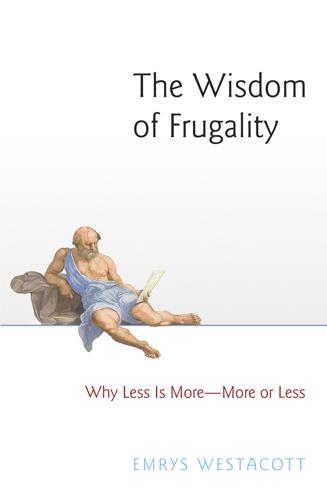
The Wisdom of Frugality: Why Less Is More - More or Less
by
Emrys Westacott
Published 14 Apr 2016
In some cases, it just seems fantastically self-indulgent, as when Marie Antoinette had an entire village built purely in order for her to play at being a milkmaid, or when Michael Jackson had a private amusement park constructed on his estate. In others the extravagance seems to be motivated by a desire to flaunt one’s wealth: that, presumably, is the point of wearing a Rolex watch with diamond inlays and other such items known as “Veblen goods” (named after Thorstein Veblen, the economist who introduced the term “conspicuous consumption”), the main purpose of which is to demonstrate superior status. Sometimes the spending itself can be part of the display, as when some billionaires outbid all comers to secure an artwork they know little about or a star player for the soccer team they own.
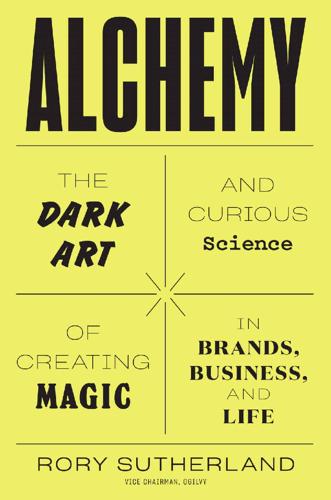
Alchemy: The Dark Art and Curious Science of Creating Magic in Brands, Business, and Life
by
Rory Sutherland
Published 6 May 2019
However, the theory of sexual selection was a truly extraordinary, outside-the-box idea, and it still is; once you understand it, a whole host of behaviours that were previously baffling or seemingly irrational suddenly make perfect sense. The ideas that emerge from sexual selection theory explain not only natural anomalies such as the peacock’s tail, but also the popularity of many seemingly insane human behaviours and tastes, from the existence of Veblen goods* such as caviar, to more mundane absurdities such as the typewriter. For almost a century in which few men knew how to type, the typewriter must surely have damaged business productivity to an astounding degree, because it meant that every single communication in business or government had to be written twice: once in longhand by the originator and then again by the typist or typing pool.
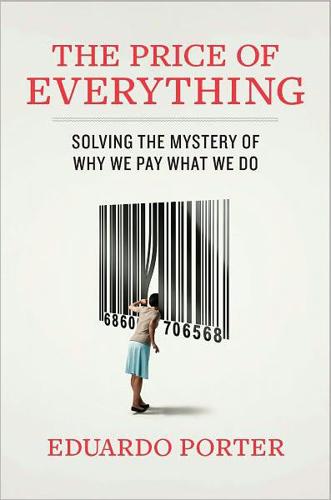
The Price of Everything: And the Hidden Logic of Value
by
Eduardo Porter
Published 4 Jan 2011
“The substantial diamond gift can be made a more widely sought symbol of personal and family success—an expression of socio-economic achievement,” said an N. W. Ayer report from the 1950s. Today 84 percent of American brides get a diamond engagement ring, at an average cost of $3,100. In 2008 Armin Heinrich, a software developer in Germany, created the ultimate Veblen good: he designed an application for the iPhone called I Am Rich. It did nothing but flash a glowing red gem on the screen. Its point was its expense: $999. Maybe stung by criticism over its banality, Apple removed it the day after its release. But before it could pull it, six people had bought it to prove that, indeed, they were.

More: The 10,000-Year Rise of the World Economy
by
Philip Coggan
Published 6 Feb 2020
In 1899 Thorstein Veblen published The Theory of the Leisure Class, in which he coined the term “conspicuous consumption”.110 Consumers bought goods to demonstrate their wealth and status, rather as a bower bird decorates its nest to attract a mate. The result is that some products are only worth having because of their exclusiveness. So-called Veblen goods are those where an increase in price will push up demand. There was always something snooty about the attitude of some commentators towards mass consumption. How dare the common people take pleasure from buying stuff? Indeed, it brings to mind the medieval sumptuary laws against buying clothes, which tried to prevent poorer people from wearing fabrics and colours that were favoured by the aristocracy.